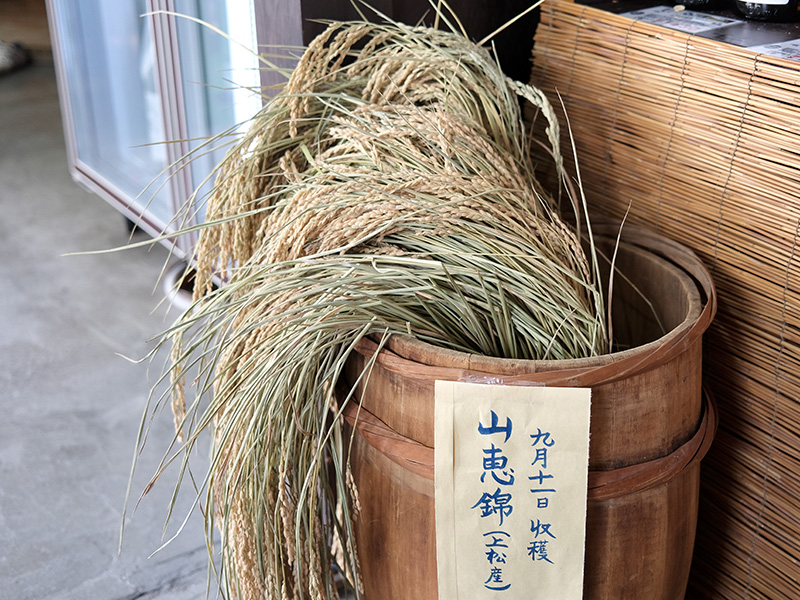Visiting a Sake Brewery on the Nakasendo
Visit Nakazen Shuzo, the smaller of Kiso Fukushima’s two sake breweries, for a taste of its history.
Update:2022/02/28

Walking along the Nakasendo Highway and visiting its post towns is very popular among overseas visitors. And along this road, which people have traveled for hundreds of years, many sake breweries have prospered.
In the Kiso area of Nagano Prefecture, there are many sake breweries located along the highway. From south to north, there is Nishio Shuzo in Suhara-juku, Nakazen Shuzo and Nanawarai Shuzo in Fukushima-juku, and Yukawa Shuzo in Yabuhara-juku. These breweries have traditionally produced strong, flavorful sake to relieve travelers of their exhaustion from their long-distance journeys.
Today, we visit Nakazen Shuzo, the smaller of Kiso Fukushima’s two sake breweries, for a taste of its history.
Nakazen Shuzo’s Main Brand: Nakanorisan
Nakazen Shuzo was founded in the Edo period (1603-1868) and has over 150 years of history. The brewery has watched over many travelers on the Nakasendo Highway from its location on the outskirts of Fukushima-juku.


The signature sake of Nakazen Shuzo is called Nakanorisan. The name comes from a line in the famous song Kiso-bushi, originating from this region. Nakanori-san were log drivers, one of the Kiso Valley’s most dangerous jobs. The Kiso Valley exported a vast quantity of lumber, particularly Hinoki cypress, so Nakanori-san would ride logs down the swift Kiso River, transporting them from the mountains all the way towards Nagoya.
The sake label of the Nakanorisan brand pays homage to this difficult work, showing a man expertly steering a log using a long stick in a swift current.


A Taste of the Kiso Valley
Sake is a simple drink made from rice and water. It is made almost everywhere in Japan, and there are not many regional differences in how it is made. Regardless, each region and brewery produce their own unique sake. These differences in flavor and aroma are known as kura-guse, and are a result of the rice, local environment (especially water and climate), and the brewers themselves.
Since the early 2000s, Nakazen Shuzo has exclusively used rice grown in Nagano for all of their sake. It is uncommon to use rice from a single region; however, the brewery wanted to showcase Nagano Prefecture’s excellent sake rice. In the words of Nakazen Shuzo’s president, Mr. Minami, "It makes perfect sense to make sake with local rice.”


The local environment affects the flavor of Nakazen Shuzo’s sake as well. The brewery is situated at an altitude of over 700 meters and surrounded by mountains. Soft ground water that once flowed down the area’s tall peaks is drawn from a horizontal well and used in every step of the sake-making process. The harsh winter cold of the Kiso area also prevents bacteria from growing.
Sake Making and the Toji
The sake-making process begins every year in early summer when the annual production plan is finalized. Rice is purchased in the summer, and the brewery is ready to start production in October or November. The brewing process lasts until the end of the brewing season in April. Several different types of sake are produced during this time.


Sake brewing is carried out primarily by a chief brewer known as a Toji. At Nakazen Shuzo, the Toji is Takashi Yamaguchi. From the time he starts making sake in the fall until the end of the spring, the Toji can't take a single day off. When Mr. Yamaguchi first began his sake brewing career, he was told, "If you want to become a sake brewer, remember you won't get to see your parents when they die."
Mr. Yamaguchi is in charge of the strict sake brewing process and continues taking on new challenges, such as creating sake with a more refined taste to meet the changing times, while respecting the traditional sake-brewing techniques of Kiso.
Sake Brewery Visits and Points of Interest along the Nakasendo


Nakazen Shuzo offers tours of the brewery (*tours are currently limited due to the pandemic) and sells sake in the store adjacent to it. Both Mr. Minami, the company president, and Mr. Yamaguchi, the Toji, are happy to show you around during the tour if they are not too busy.
The brewery has hosted several overseas visitors in the past. Not only are they intrigued by the sake-making process, but many of them are also fascinated by Japanese culture and architecture. The thick pillars and beams of the old sake brewery, constructed during the Edo, are astonishing. Visiting a sake brewery and tasting sake will enhance your appreciation of sake.


During the Edo period, Fukushima-juku, where Nakazen Shuzo is located, was a vital transportation hub on the Nakasendo Highway (1603–1868). The ruins of the checkpoint and the residence of the Yamamura deputy governor who governed it still evoke the atmosphere of those days. After walking along the highway and experiencing the post towns, a visit to a sake brewery is recommended. After a long day of walking, a drink of Kiso’s sake will let you experience what it was like to be a traveler on the Nakasendo in the Edo period.




